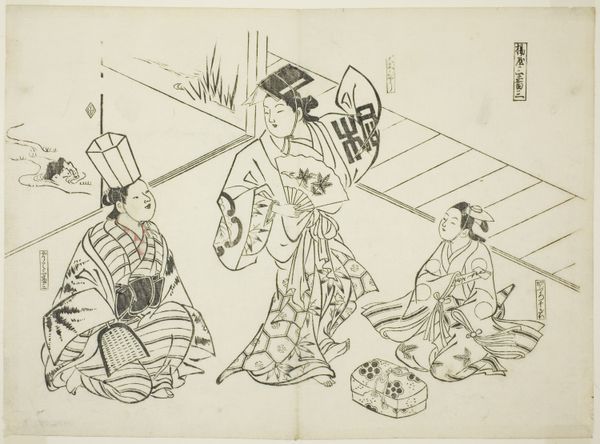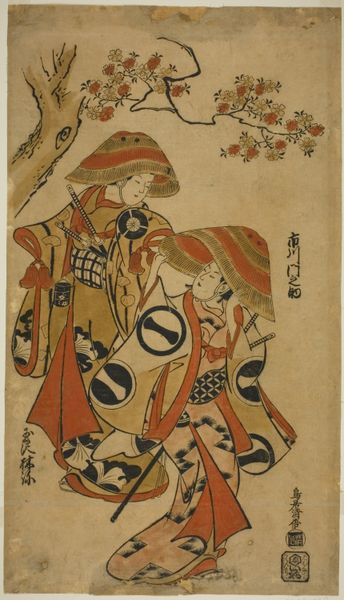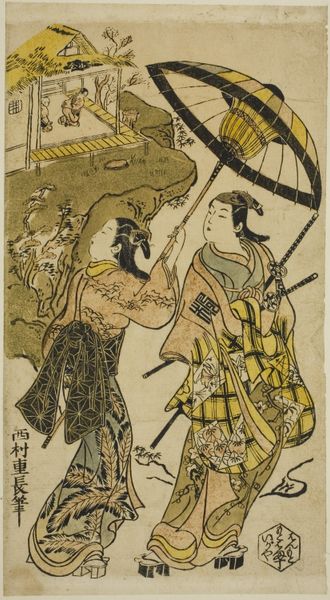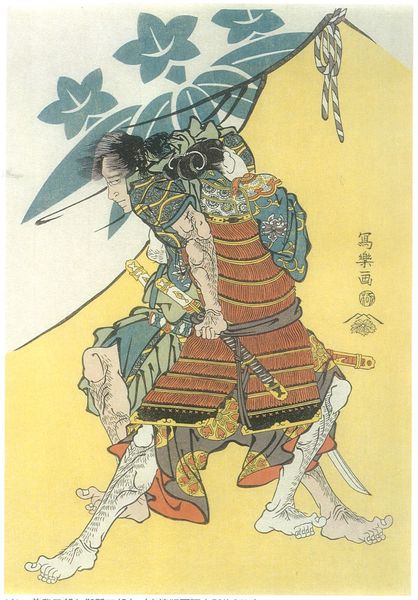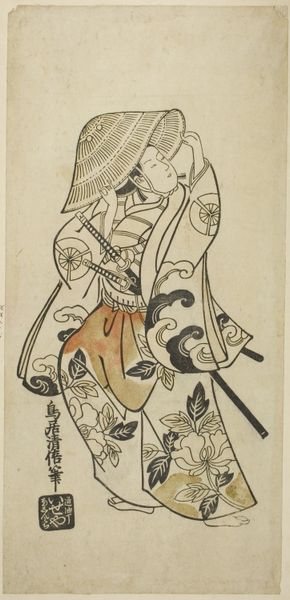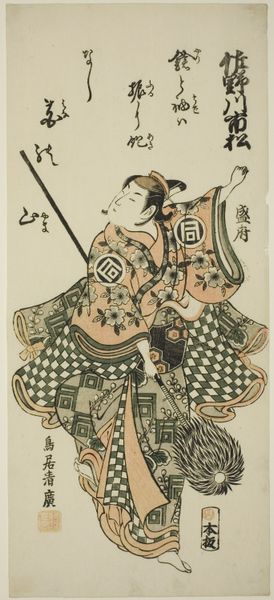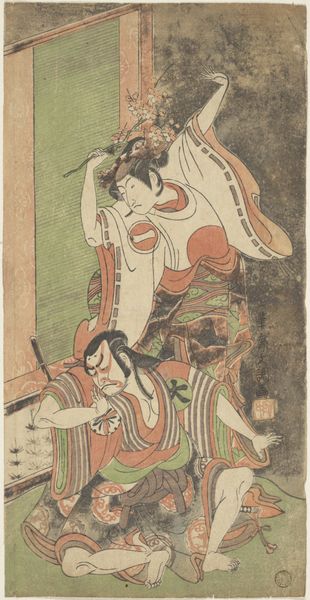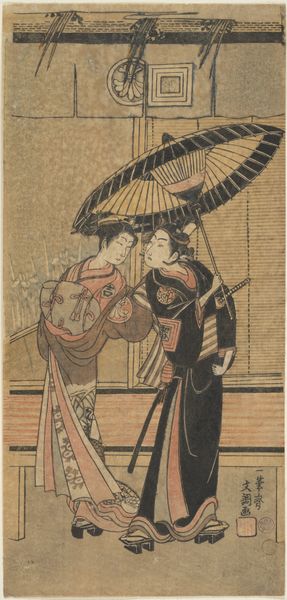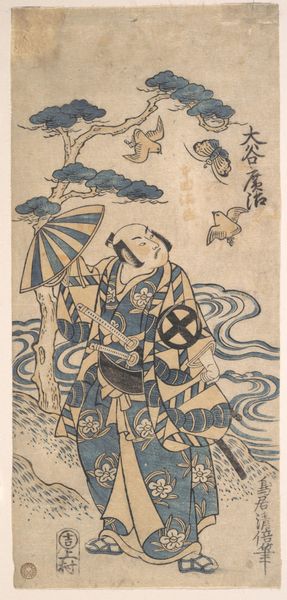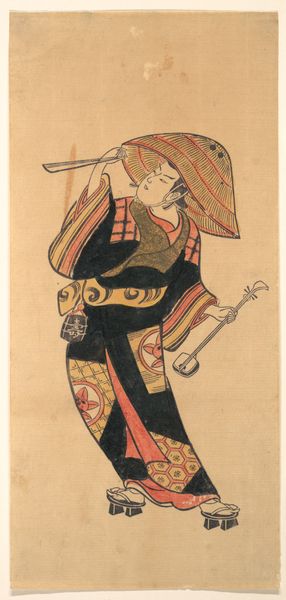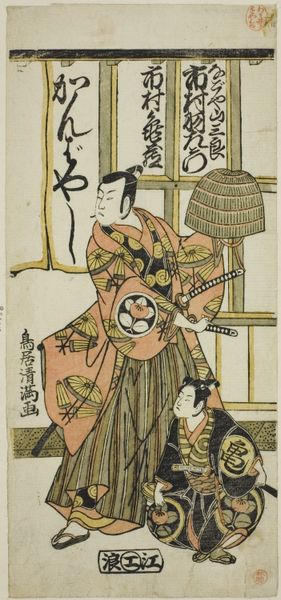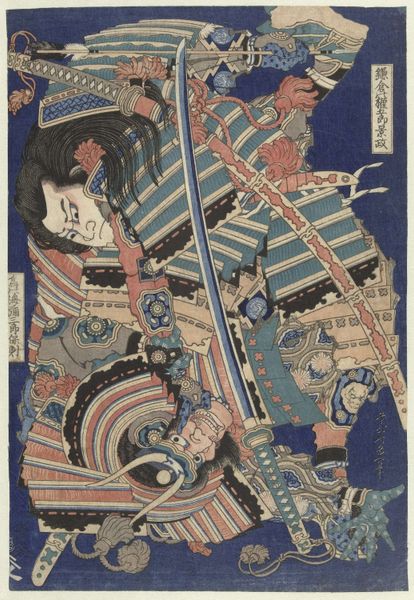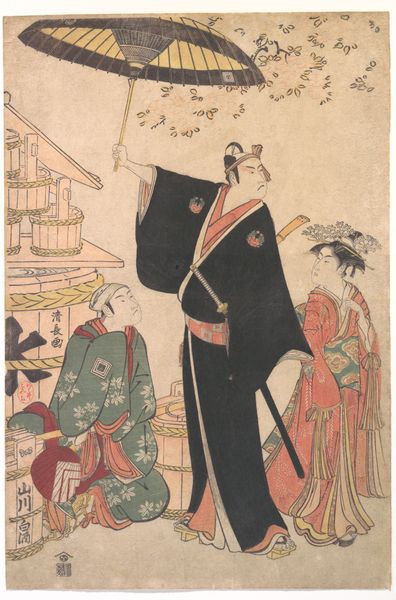
The Actor Ikushima Daikichi as an Oiran on Parade in the Streets of the Yoshiwara 1699 - 1708
0:00
0:00
print, ink, woodblock-print
#
portrait
#
ink drawing
#
street-art
# print
#
asian-art
#
ukiyo-e
#
figuration
#
ink
#
woodblock-print
#
genre-painting
#
calligraphy
Dimensions: 20 31/32 x 11 7/8 in. (53.3 x 30.2 cm)
Copyright: Public Domain
Editor: This woodblock print by Torii Kiyonobu I, created sometime between 1699 and 1708, depicts an actor dressed as an oiran in a street scene. What strikes me is how bold the lines are, almost like a stencil. What symbolic layers are present in this work? Curator: Indeed. Notice how the patterns—the geometric designs on the umbrella, the floral motifs on the kimono—these are not merely decorative. The umbrella, shielding the figure, can represent protection, but the repeated triangles also suggest a connection to theatrical performance. Oiran processions were very carefully controlled performances with powerful echoes throughout society, were a potent cultural symbol of Edo period society, where identities are not just worn, but consciously performed. How might that intersect with gender roles and expectations of the time? Editor: So the patterns aren't just pretty; they are clues to understanding identity and the role of the oiran in society. Is that right? Curator: Precisely. Consider the tiger motif on the kimono. The tiger can symbolize power, ferocity, even protection from evil spirits. Pairing that with the actor performing a female role is particularly interesting when exploring masculine power and theatrical cross-dressing, revealing cultural memory. Do you think that there's any deliberate irony in presenting a male actor adorned with symbols of both feminine beauty and fierce strength? Editor: That’s such a rich idea. I hadn't thought of it that way! It challenges my understanding of what those symbols are usually meant to convey. Curator: Exactly. Art like this isn’t just about aesthetics. The symbolic language of ukiyo-e allows the image to serve as a complex archive of cultural attitudes, traditions, and transformations that allow for a reading that echoes even today. Editor: I never realised a simple stroll could carry so much meaning. Curator: Neither did I, before examining how it reflects cultural memory through symbols and imagery!
Comments
No comments
Be the first to comment and join the conversation on the ultimate creative platform.
